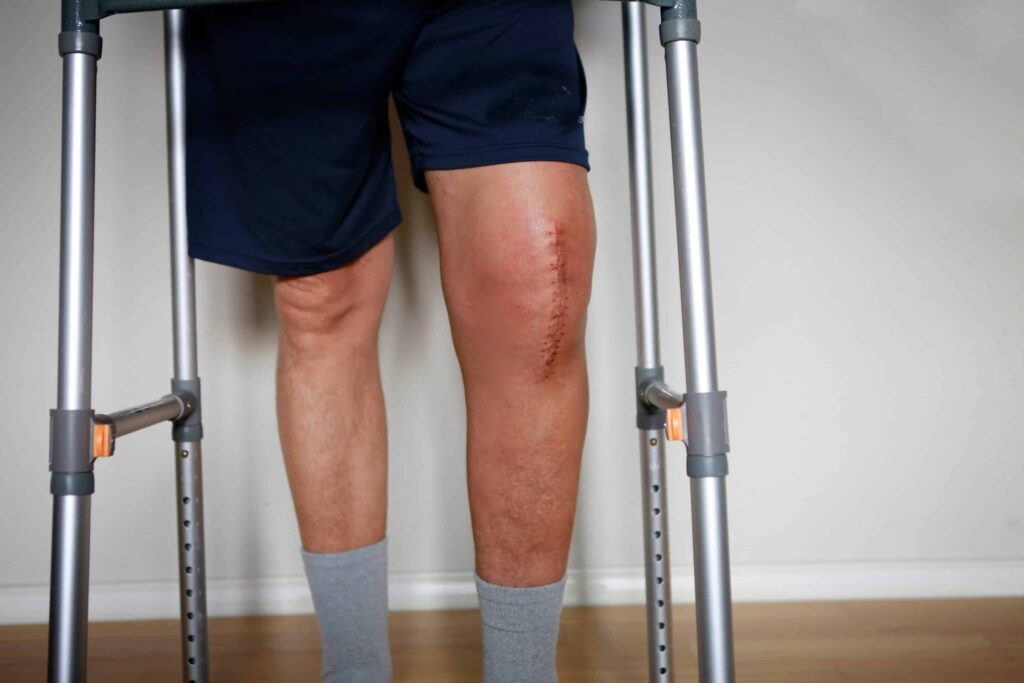
Knee replacement surgery, sometimes called knee arthroplasty, is frequent for severe knee pain caused by arthritis, accident, or other diseases. While the surgery itself is a significant step toward pain relief and improved mobility, one of the most common questions patients have is, ” how long does knee replacement surgery take?” The recovery process is gradual and involves several stages. Expectations can help patients mentally and physically prepare for a good recovery.
Immediate Recovery
Rehabilitation begins soon after knee replacement. In the hospital, patients will be monitored closely for the first few days to ensure that they are recovering well and not experiencing any complications. Hospital stays normally last two to three days, depending on the patient’s health and other medical issues.
During this initial period, patients will be given pain management options to help manage any discomfort, and physical therapy (PT) may begin on the very first day after surgery. It might sound daunting, but the primary goal of early physical therapy is to encourage mobility and flexibility while preventing the knee from becoming stiff. Patients will do easy leg-strengthening exercises with their physical therapist to enhance their range of motion.
Although every person’s recovery timeline is unique, most individuals will be able to return home within a few days. Some people may require additional support at home, especially if they live alone or have difficulty walking. It’s essential to follow the surgeon’s recommendations for rest, movement, and pain management during this early recovery phase.
The First Few Weeks
Most patients must focus on recovery and strength and flexibility in the weeks after surgery. This period typically lasts for the first six weeks after surgery. Patients will continue physical treatment, which intensifies as strength and mobility improve. The exercises may initially be limited to gentle movements, but as the knee heals, the therapist will incorporate more advanced exercises to further enhance movement and flexibility.
For the first few weeks at home, patients may need help dressing, bathing, and cooking. In the weeks after surgery, patients should elevate their legs and apply ice to reduce swelling and bruises. Additionally, pain levels will decrease over time, but some discomfort may still be present as the knee adjusts to its new position.
Running, leaping, and heavy lifting should be avoided for the first six weeks, but most patients can resume modest activity. Walking short distances and performing simple tasks at home are usually the extent of what patients can handle in these early weeks.
Recovery At Three To Six Months
By three months after knee replacement surgery, many patients will notice a significant improvement in both function and pain levels. Swelling should be considerably reduced, and patients should often be able to perform more activities, including light exercise and walking longer distances. While the knee’s mobility and strength will improve, it may take six months to attain its full potential.
Physical treatment remains crucial during healing. Patients will be expected to gradually increase the intensity and duration of their exercises, aiming to restore strength and prevent stiffness. After six months, many patients may walk without a cane or walker and resume most everyday activities.
However, even though the knee may feel more functional and pain-free, it is essential to remember that full recovery doesn’t happen overnight. Lower-impact workouts must be continued to strengthen knee muscles and prevent long-term issues. Individuals who have had knee replacement surgery should also avoid high-impact sports or activities that put excessive strain on the knee, as this could result in wear and tear on the new joint.
Full Recovery At One Year
For most patients, complete recovery from knee replacement surgery is reached at the one-year mark. At this point, patients should expect minimal to no pain and improved mobility, allowing them to return to most of their usual activities. Low-impact exercises like cycling, swimming, and walking may be possible for long periods. In fact, many individuals report feeling like they have a “new knee” after a year of recovery, as the joint’s full functionality is restored.
Most knee replacement patients report improved quality of life, but recovery times depend on age, health, and rehabilitation procedures. The pain relief and restored mobility enable them to enjoy activities they may have avoided before the procedure.
Conclusion
Knee replacement surgery recovery takes time, commitment, and therapy. While the initial recovery period in the hospital is short, the full recovery can take up to a year. During this time, physical therapy plays a vital role in regaining strength, flexibility, and mobility in the knee. Patient quality of life can improve significantly with good care and attention to the healing process, free from the discomfort and constraints that drove them to seek surgery.





